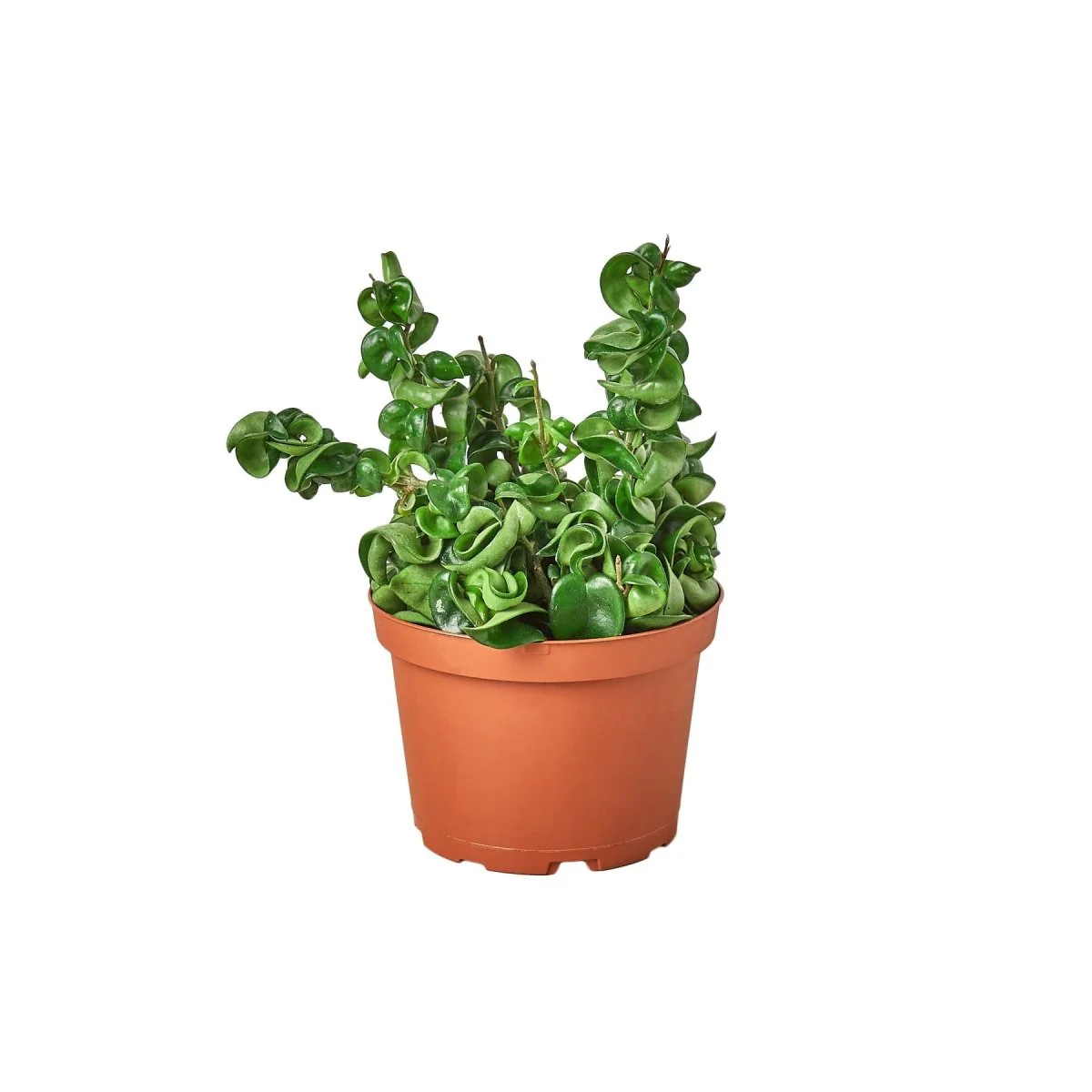Hoya Carnosa Compacta 'Hindu Rope'
-
Detail
Hoya Carnosa Compacta ‘Hindu Rope’
The Hoya Carnosa Compacta, affectionately known as the Hindu Rope Plant, is a captivating cultivar in the Hoya genus—renowned for its uniquely twisted, cascading vines that resemble thick, rope-like strands. Its glossy, waxy leaves are densely curled and come in either rich dark green or creamy variegated forms, making this plant a living sculpture in any indoor space.
When mature, the Hindu Rope produces clusters of fragrant, star-shaped flowers—often pink with a red center. These blooms have a porcelain-like sheen and are so pristine they almost look artificial. With its sculptural form and rewarding floral display, it's no wonder this Hoya is among the most beloved varieties in cultivation.
Despite its exotic appearance, the Hindu Rope is relatively easy to care for and thrives with just a bit of attention. It's ideal for hanging baskets or trailing over shelves, but can also be trained vertically on trellises or mounted displays.
Plant Profile
- Botanical Name: Hoya carnosa 'Compacta'
- Pronunciation: HOY-yuh kar-NOE-suh kom-PAK-tuh
- Common Names: Hindu Rope, Krinkle Kurl
- Family: Apocynaceae
- Native Range: Southern India
Hindu Rope Plant Care
- Care Level: Moderate
- Light: Prefers 6–8 hours of bright, indirect light daily. Can tolerate lower light, but growth and flowering will be reduced. Avoid direct sun, which can scorch the leaves.
- Water: Allow the top 1–2 inches of soil to dry between waterings. Infrequent, but consistent watering is best—avoid letting the plant sit in water.
- Humidity: Tolerates average household humidity (50–75%) but appreciates a boost in more arid conditions.
- Temperature: Thrives in typical indoor temperatures between 55–85°F (13–29°C). Protect from cold drafts.
- Pruning: Prune lightly to remove dead leaves or encourage branching. Avoid removing flower spurs, as blooms return on old growth.
- Feeding: Fertilize monthly during spring and summer with a balanced, water-soluble houseplant fertilizer at half strength.
- Propagation: Stem cuttings root easily in water or soil.
- Growth Habit: Slow to moderate growth rate. Vining and trailing—perfect for hanging displays or climbing supports.
- Soil: Requires a well-draining potting mix, such as a chunky orchid or cactus mix amended with perlite.
- Pests: Watch for mealybugs, aphids, spider mites, and scale. Regular inspection helps prevent infestations.
- Toxicity: Considered non-toxic to humans and pets, though best kept out of reach as a precaution.
Want to Grow Your Hoya Like a Pro?
Check out our Hoya Care Guide for expert tips on keeping your plants lush, healthy, and blooming. Looking for pet-safe houseplants? Explore our Guide to Pet-Friendly Plants and build a green space the whole household can enjoy.






